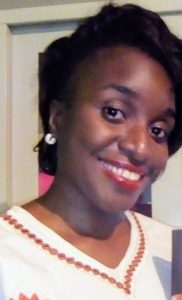Creative writing is any piece of writing that expresses ideas and thoughts in an imaginative way. It is an art form. It is writing that allows you to escape the trappings of reality and engage the free-range reign of your imagination’s meanderings and tap into inspiration. The kind of inspiration that makes one step out of the cold hard facts onto the dance floor of one’s muse.
Writing that falls within this category
- Short stories – Captures and usually revolves around a single event in a short space of time with a limited number of characters and themes
- Poetry – captures ideas in verse using metaphorical languages
- Novels – extended work of fiction with a more complex plot and developed characters
- Screenplays – written artwork meant the screen
- Songs – uses verse and is communicated is diverse forms
- TV scripts – written artwork intended for TV
- Epics
- Flash fiction – the short-short story
Forms not considered Creative Writing (arguably)
- Academic writing
- Textbooks
- Journalism
- Technical writing
We also have what is known as creative non-fiction: This delivers factual information innovative, interesting and sometimes a fun way. Sesame Street is a good example. It is inspired by the imagination but stays true to keeping the facts straight and clear. In some creative non-fiction, fictitious characters, events or settings may sometimes be introduced in order to drive home certain points using illustrations, as long as the central message is not diluted, this is considered creative non-fiction.
What about art that is created based on a true story, one may ask? This is considered creative fiction because there are elements that are usually introduced that may not have been part of the actual reality.
Read – Beginner’s note for Writers
Genres of Creative Writing
This is the categorisation of fiction types. Most genres have their own tropes and codes – themes, subjects, character types and motifs that occur regularly in that particular type of fiction. There are many genres and subgenres in fiction.
See some genres below and find where your muse draws you:
- Romance – This is usually an emotional journey where the hero goes through an exploration of attraction; often with heartrending events, misunderstandings, personal revelations and spicy kisses – culminating in happily ever after.
- Science Fiction – often futuristic in nature. Characters in this type of genre explore what it means to be human in an ever-changing world.
- Paranormal – these include such characters as ghosts, vampires, psionic powers.
- Fantasy – mythical universe of the writer’s creation. characters with extraordinary powers set forth on a hero’s journey to vanquish evil and restore order and justice to their magical realm.
- Comedy – full of gags and silliness, often witty. Reveals the funny side of human foibles.
- Psychological thriller – characterised with heightened feelings of suspense, anxiety and surprise.
- Literary – places more value on meaning than entertainment. These works are well crafted and real, with evocative language intended to draw out contemporary concerns and themes. Often introspective and make for larger social commentary.
There are many more genres, this is not an exhaustive list.
We love all forms of creative writing expression; whatever tickles your fancy, allow inspiration to take you away into the often unchartered realms of imagination. The main thing is to decide to write and get on with it – find the best form that works for you for that project and run with it!
Creative writing creates the world of literature
At this point, it’s good to have a definition of literature: the systematic study of spoken and written work of artistic value and beauty i.e. creative works of mankind put in words.
Literature is known to be a reflection of society. It attempts to describe the present society around us through the lenses of the writer. The writer is an important member of society whose work must be taken seriously and respected. Literature has the power to change the world.
‘The purpose of literature is to turn blood into ink,’ T.S. Eliot
The Creative Writer
The serious creative writer must read widely and voraciously across genres but especially in their chosen area of interest. The broader one’s scope of literature, the richer will be the work that the creative churns.
The maxim, ‘Write what you know,’ becomes especially relevant here. Sometimes writers venture into genres for which it is impossible to have first-hand experience so that one can have intimate knowledge of the subject. Knowledge can be gained through in-depth research into the subject one wishes to tackle. This works for both fiction and non-fiction. Beware of Fake News, even in fiction!
Whether one writes for publication, to share with friends, or even just for oneself, as an activity of the brain or to escape or even make sense of reality – writing is a great way to inspire and nurture the soul.
‘Better to write for yourself and have no public, than to write for the public and have no self,’ Cyril Connolly
Creative Writer’s Tools
- Writing materials such as pen, book (paper), digital writing tools or one can also use a voice and/or video recorder. Always carry a pen and notepad as one never knows when ideas flow
- Thesaurus – indispensable. Makes for richer, descriptive and specific choice of words for your particular need of the moment. Online or physical, consult one.
- Dictionary – trust your instincts but this reference is a great partner for improving your word power and vocabulary
- Five senses – Your art should make the reader smell the scents, hear the soundtrack, feel the stink and taste the bitter, sour or sweet in the food.
- Books – A good writer reads, reads and reads. This is one of the best ways to improve one’s skills.
Many times, the writer already knows what he/she wants to write about. The stimulus is usually a trigger in the environment. It may be an abstract concept or a physical thing that ignites the creative forces within the imagination to start turning the wheels. Sometimes a little help is necessary to start or keep rolling.
External resources: some of the best creative writing is inspired by newspaper headlines, music (creates mood) or music lyrics. Conversation (you could be part of it or eavesdropping), taking a walk in nature, other media (film, podcasts, books, social media), photographs… a writer needs to be a keen observer of the environment around him or her. Take in everything by engaging all the senses: sight, smell, touch, hearing and taste. Of course, include your intuitive prompts.
Internal Resources: these are generated from within. One’s inspiration could be personal things like memories, dreams, opinions and ideas about different subjects. Even one’s plans and goals for the future.
Finding the write path: Structure
As much as creative writing is about use of the imagination it is a good idea to have a road map. This helps one to have a sense of direction – structure creates a sense of stability to one’s creative ideas. This is not mandatory and it can even be done after you have completed your first draft. It makes for a messy work, though, most of the time if done in this manner. Structure is a campus that gives the writer direction to the destination and the impetus to continue writing when the initial zeal and energy wears off.
Here are some forms of structure
-
The 3-Act Structure
This the most popular form and some claim it was invented by Aristotle, because he noted that a story must have a beginning, middle and an end. It starts with an inciting incident in the beginning, (Act 1 – set up) and through a series of obstacles, there is ascending action that leads to the midpoint twist, there is crisis, hits the head also known as the climax (Act 2 – confrontation). In the final stage (Act 3 – resolution) the tension cannot be sustained, the descending action begins and the story needs to wrap up and all conflicts resolved. This is also known as denouement. We see this in most superhero story structures of the Marvel cartoon and films and many Hollywood blockbusters.
-
Ivy Structure
This is a no-fuss structure employed by many creative non-fiction, modelled on a branch of ivy. The main stem is the central theme or message. Each leaf is a scene, an opinion or researched fact. Scenes come in a logical or chronological manner.
-
Save the Cat Structure
Originally developed by Blake Snyder as a template for screen-writing narratives. It can be adapted for fiction that is highly visual. It is basically a complex combination of two structures -3 Act and Hero’s Journey (coming next). The plot is created in such a way that the protagonist faces a lot of seemingly unexpected and insurmountable challenges. The obstacles towards the climax, makes the reader/watcher almost conclude that the protagonist has lost but then he/she finds inspiration and pushes through all the catastrophes.
-
Hero’s Journey
In this structure, the hero receives a call to adventure and is usually met along the path by a mentor or some kind of guide who helps them overcome temptations or challenges. This makes use of archetypes and myth in writing, a structure crystallised by the 20th-century psychologist Joseph Campbell. This structure satisfies fiction plots where a hero goes on a quest, wins a victory over a crisis, then returns home altered by his or her experiences. When the hero reaches the lowest point, a revelation will allow them to achieve transformation which makes them snap out of their despair and they fulfil their quest. The Lord of the Rings and Jane Eyre are good examples and movies such as Star Wars: A New Hope and the Lion King.
The Story Style
Every writer has a unique voice and tone in their work – it’s about how they set down words on a page. It is the unique lens through which they perceive the world around them. There is no wrong or right in this. Whatever the voice writers are defined by two types of process.
- Pantsing – ‘seat-of-the-pants writing
This is writing without a formal plan or structure in mind. They follow the muse that lets the characters, plot or idea take on life naturally.
- Plotting
This means the writer has the concept all figured out before they start their formal work of creation. They have details of all the characters, their personality traits, their likes and so on. The setting is described in full detail and whatever themes are to be explored are all carefully articulated in the plan.
Show, don’t tell
This is a common phrase we hear a lot about in writing circles referring to a technique of showing the reader what happens in the story through action. Telling may be necessary but you win over the reader better by showing characters in action, or getting them to speak in dialogue or experience emotion.
Point of view
Who is telling the story?
This is the perspective through which the story is told and the voice it is told in. Different points of view create different reader experiences for your story.
- Are you telling the story as me or I? This is the first person point of view. It creates a sense of immediacy, like one is right in the head of the protagonist and inside the action.
- Are you writing as he, she or they? The third-person point of view. In this case, the narrator is the all-seeing and all-knowing, which allows the writer to show thoughts, feelings and actions of the whole cast.
- Are you writing as you and your? Second-person point of view. This is not common for novels as it is difficult to sustain, but if done right, it is a great way to make the reader feel like an active participant in the unfolding drama of the creative writing work.
Whatever point of view you pick, stick with it, to create consistency for the reader.
Improving your craft
Everyone has particular skills and areas of interest – this is true in writing as it is in life. Some writers sail across several genres easily, while others stick to one or two. There is no right or wrong in this.
The best way to develop a broad range of writing styles is to practise. Read widely and be willing to experiment. Have no fear. You will realise, if you have not already, that you possibly have an affinity to certain forms and not others. Don’t despair. All great writers are always improving their craft by reading on the skills they wish to acquire and regularly challenging themselves through practice.
‘A writer is someone who has taught their mind to misbehave,’ Oscar Wilde

Marita Banda is the author of Telling It Like It Is, a book of poems and Traditional Zambian Etiquette for Modern Living, Youth Edition, a book on manners for contemporary times. This book has been adopted as the official textbook for the Etiquette Course by the Zambia Institute for Diplomacy and International Studies (ZIDIS), the school that trains all Zambians accredited to diplomatic missions. Marita is the current Board Chairperson for Zambia Reprographic Rights Society (ZARRSO). She works as a private tutor of English and French languages. She also edits fiction and nonfiction fiction work in English.








Thank you for this useful content. The writers world shall remember. Be blessed all.